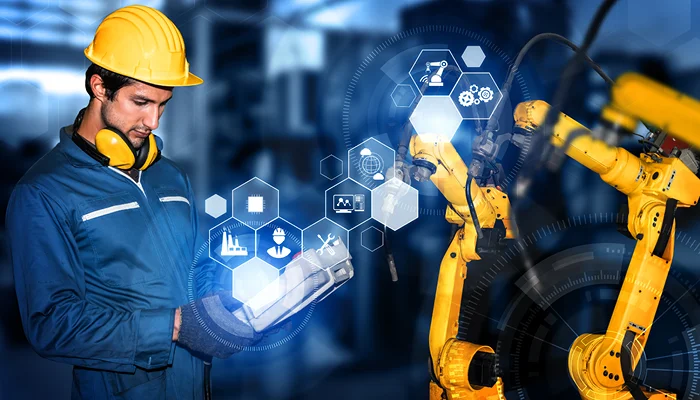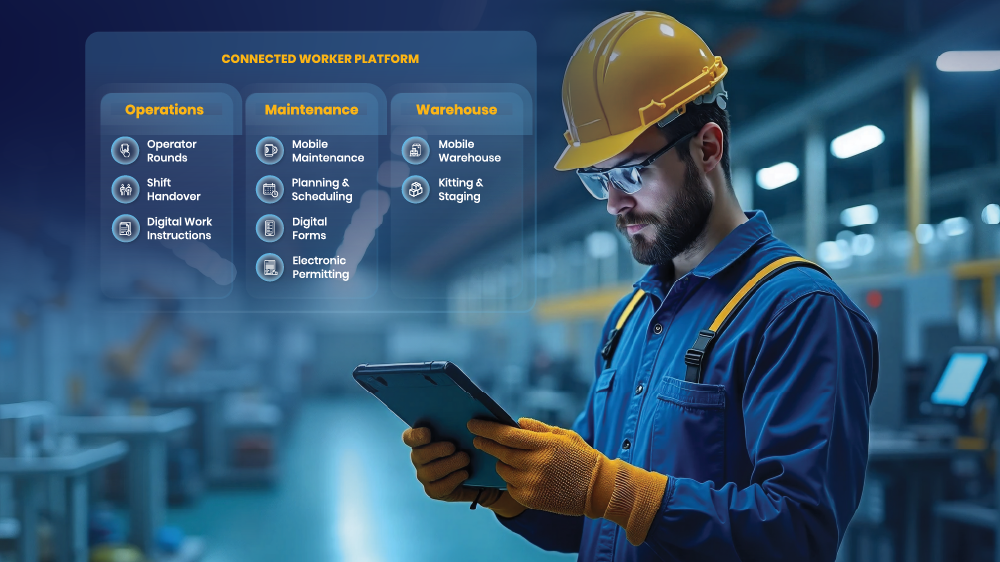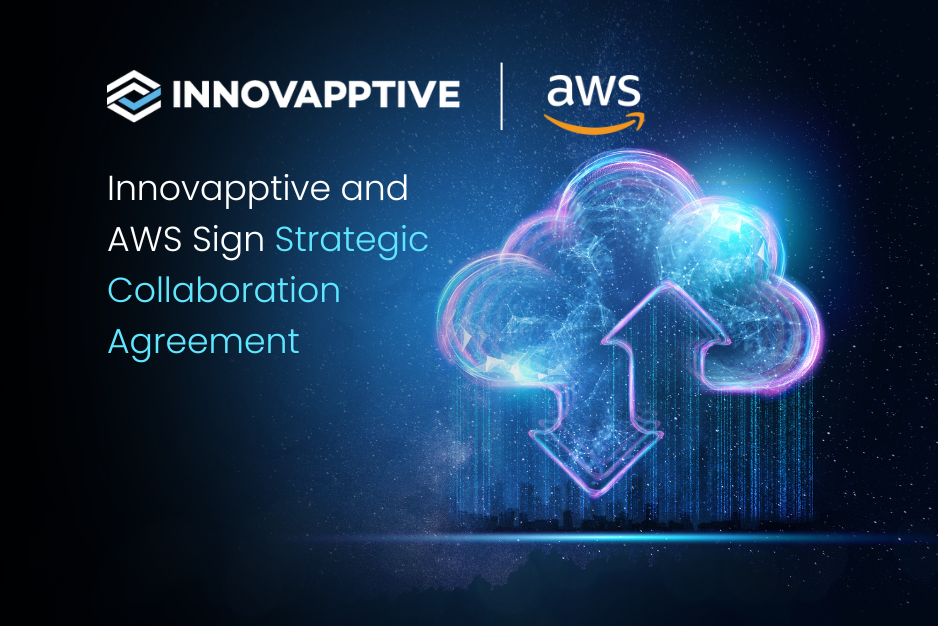A Smarter Workforce: Enhancing Collaboration and Productivity with a Connected Worker Platform

It's no secret that collaboration inefficiencies can substantially lower a plant technician's productive time. According to industry estimates, only around 30 percent of their time is productive. However, digital technologies such as connected worker platforms enable them to complete forms online have proven effective in reducing human errors that usually come with manual data entry while also improving the speed of record movement.
Creating a connected workforce encompasses advanced technologies such as augmented reality, barcode scanning, voice-to-text recognition, and software that is intuitive enough to ensure workers remain engaged and have a high level of adoption.
A connected worker can quickly onboard and receive in-context training information through mobile work instructions that walk him or her through the specific steps of a task. They have ready access to work orders, critical operational information, and the location of equipment. They’re able to quickly raise notifications when they see a safety hazard or identify equipment that needs additional maintenance, collaborating with distant colleagues to develop corrective actions.
What Is A Connected Worker Platform?
A connected worker solution bridges that gap, giving field technicians and warehouse workers a direct link to centralized data mechanisms like ERPs and EAM systems. This is about more than just issuing these workers a smartphone. Connected worker solutions enable collaboration, information sharing, data capture, and augmented reality training to empower the frontline worker to accomplish better, faster, and safer.
A truly connected worker platform would provide a single, unified source of accurate, real-time data that provides end-to-end visibility enterprise-wide across departments and processes.
Integrated mobile apps would empower frontline workers not only within their functional area but enable cooperation and communication with other groups as well. Desktop control centers would give supervisors and managers the ability to better direct frontline workers and see a larger swath of data from across the enterprise, not just their departments, delivering total visibility and enabling better analysis, interpretation, and decision-making.
Everything would be seamlessly integrated with the back-office ERP or EAM, removing silos and work management gaps caused by incompatible apps or systems. Everyone throughout the organization would have access to and be working from a single source of information at the same time.
Benefits of Using Connected Worker Platform
Here are some ways a connected worker platform can enhance collaboration and productivity:
Fostering Real-time communication: By providing instant messaging, video conferencing, and collaboration tools, the platform allows frontline workers real-time communication and information sharing. This, in turn, facilitates faster decision-making by reducing communication lags.
Mobile accessibility: Connected worker platforms enable workers to access and share information from anywhere. These platforms often have mobile applications, enabling workers to collaborate from the field or remote locations. Mobile accessibility eliminates the need to be tied to a physical workstation, enhancing productivity and enabling better collaboration across teams.
Workflow automation: Connected worker platforms automate manual, repetitive tasks, like data entry/documentation, and allow frontline workers time to work on important tasks. Besides this, automated processes also reduce the chances of errors to help improve overall productivity and efficiency.
Centralized knowledge sharing: These platforms serve as centralized repositories for documents, manuals, procedures, and other important information. Workers can easily access and share relevant knowledge, ensuring everyone is on the same page. This promotes collaboration, reduces duplication of effort, and increases productivity.
Task management and tracking: Connected worker platforms often include features for task management, assigning responsibilities, and tracking progress. These tools help teams stay organized, prioritize tasks, and monitor the status of ongoing projects. Clear visibility into tasks and deadlines improves collaboration, accountability, and overall productivity.
Training and onboarding: Connected worker platforms can support training and onboarding processes by providing access to training materials, interactive modules, and virtual simulations. This enables new employees to get up to speed quickly, fosters knowledge sharing, and reduces the time required for training. Improved onboarding leads to faster integration into teams, enhancing collaboration and productivity.
By offering real-time communication, streamlined workflows, centralized knowledge sharing, training support, and much more, a connected worker platform can certainly revolutionize collaboration and productivity. Using this technology, organizations can empower their frontline workers and maintenance teams to work collectively towards the company's profitability goals.
Ready to Learn More? Schedule a Demo Today
Innovapptive's Connected Worker platform offers a suite of prepackaged and reconfigurable applications for SAP and IBM Maximo to help the frontline worker get their jobs done faster, better, cheaper, and safer. We bring the only Connected Worker Platform that digitizes the last mile of your frontline workers into SAP and IBM (watch a short video here). We’d like to show how our Connected Worker Platform and related applications can help you successfully start and complete your journey to more efficient, safe, and productive plant operations. Schedule a free demo today by calling 844-464-6668 or by clicking here.

See It In Action
Schedule a personalized demo to see how our solutions can help your business thrive.
- 29-09-2025
Your Ultimate Guide to Connected Worker
In the rapidly evolving industrial landscape, maximizing plant efficiency and ensuring optimal...
- 20-08-2025
Building the future of Industrial Operations with Innovapptive and AWS
Most manufacturers have already gone digital. Yet business outcomes haven’t moved in step. Many...
- 22-04-2025
The $3.6B Unlock: Solving the Chemical Industry’s Labor Crisis and EBITDA Pressure in One Move
“Constraints don’t slow innovation—they force it.”


